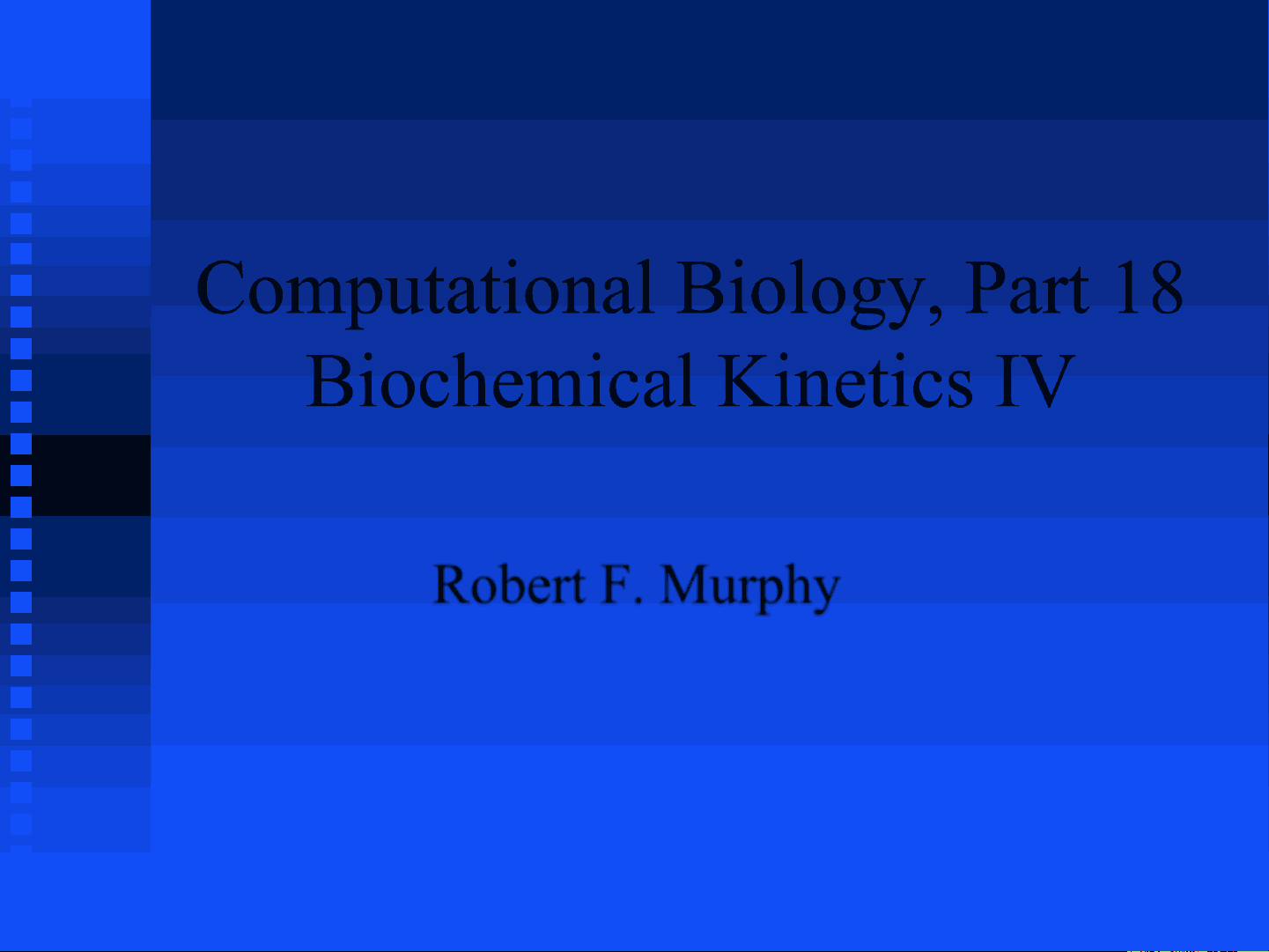
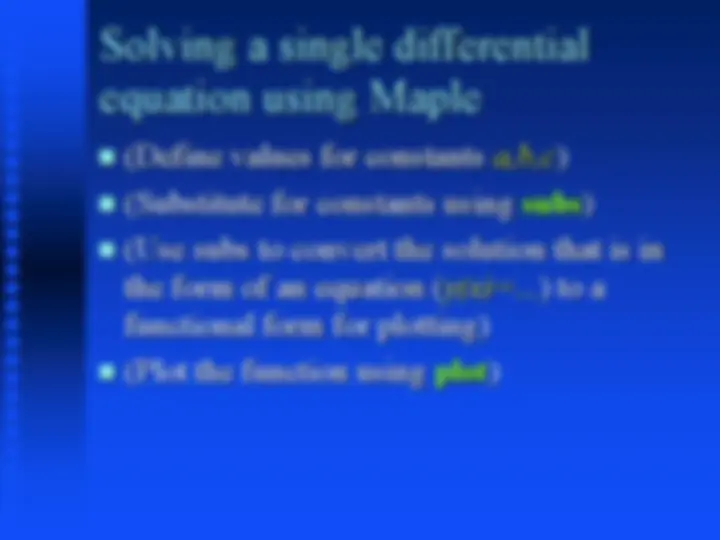
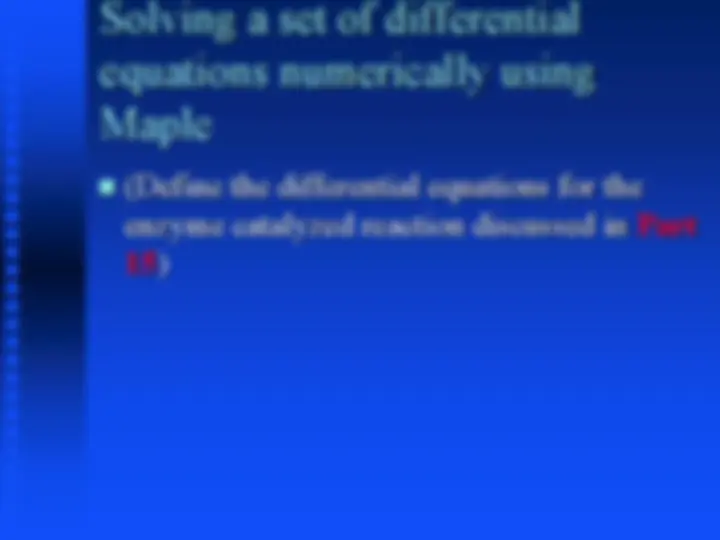
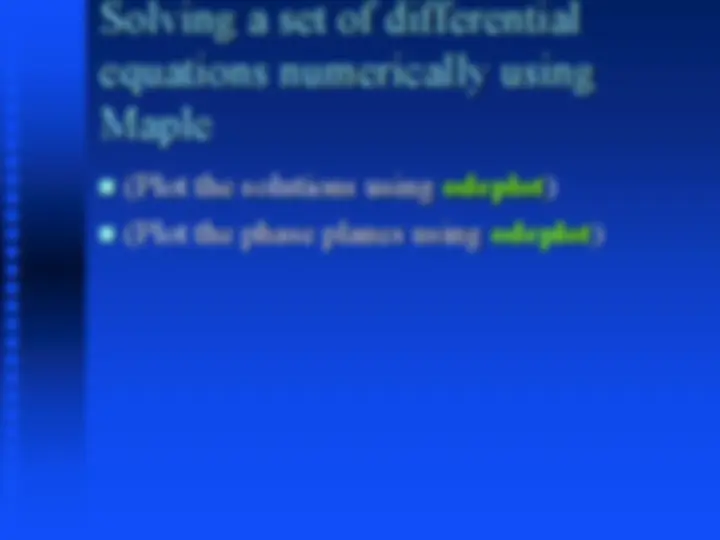
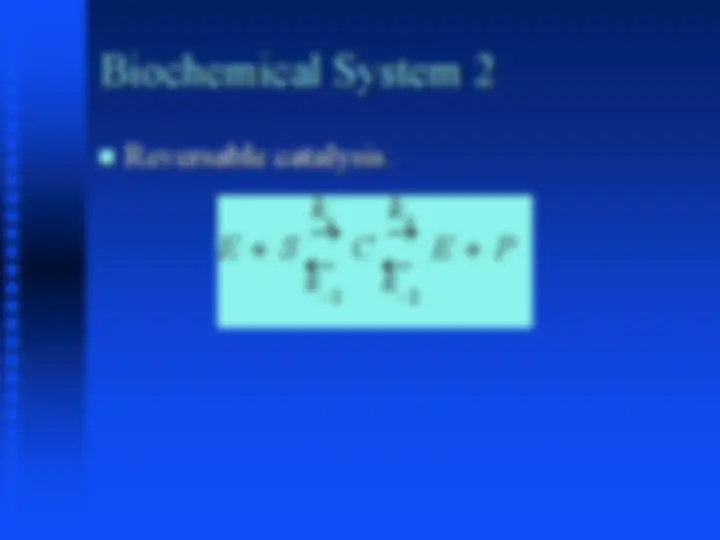
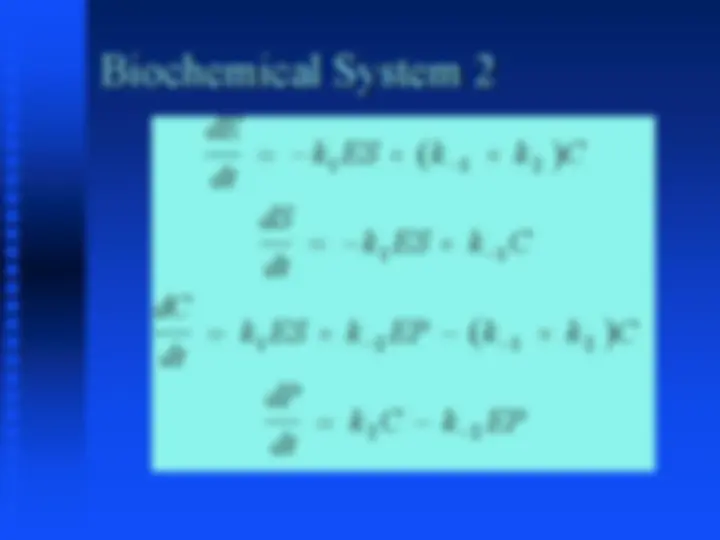
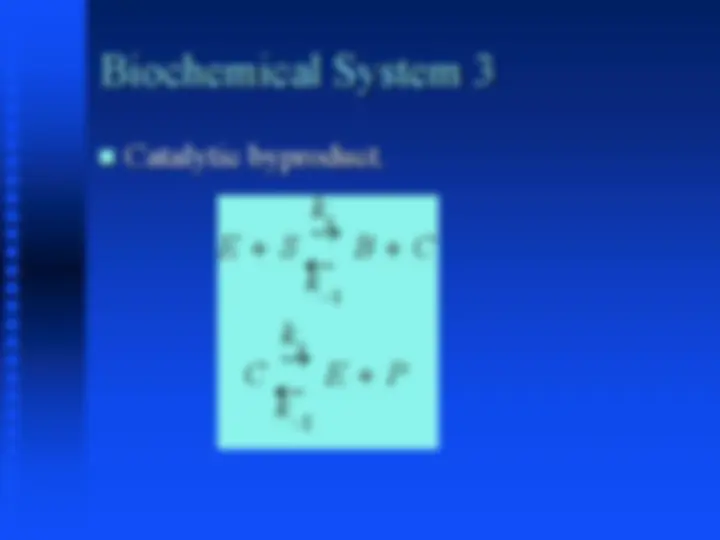


Study with the several resources on Docsity

Earn points by helping other students or get them with a premium plan


Prepare for your exams
Study with the several resources on Docsity

Earn points to download
Earn points by helping other students or get them with a premium plan
Community
Ask the community for help and clear up your study doubts
Discover the best universities in your country according to Docsity users
Free resources
Download our free guides on studying techniques, anxiety management strategies, and thesis advice from Docsity tutors
Instructions on how to use maple to solve single and set differential equations in the context of computational biology. Topics covered include defining equations, integrating analytically and numerically, and plotting solutions. The document also mentions additional biochemical systems that can be modeled using similar methods.
Typology: Slides
1 / 11

This page cannot be seen from the preview
Don't miss anything!







Robert F. Murphy
(Define the differential equation dy/dx=6x+2 using the diff operator, assigning the equation to the name deq1 )
(Integrate analytically using dsolve )
(Integrate using boundary condition y(0)=5 )
(Integrate using boundary condition y(0)=a )
(Integrate dy/dx=bx+c analytically)
(Integrate using boundary condition y(0)=a )
(Define the differential equations for the enzyme catalyzed reaction discussed in Part 15 )
(Plot the solutions using odeplot )
(Plot the phase planes using odeplot )
The following slides describe two additional biochemical systems that can be modeled by simple modifications of the model already developed.
Reversable catalysis.
k 1 k 1
k 2 k 2
Catalytic byproduct.
k 1 k 1
k 2 k 2
dE dt
dS dt
k 1 ES k 1 BC
dC dt
dP dt
k 2 C k 2 EP